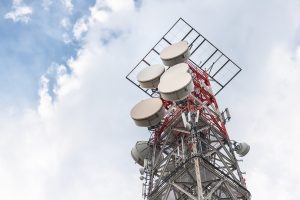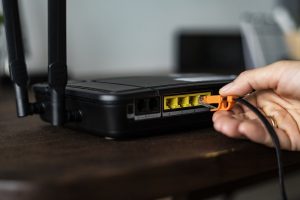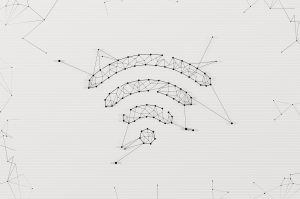According to Beecham research, over 19% of IoT deployments contain more than 10,000 global devices. With large scale IoT projects becoming the norm across verticals and use cases, IoT and network connectivity architectures are becoming more complex.
But one of the most common questions we get when it comes to an IoT deployment is – how does cellular connectivity compare to _________? (Replace blank with LoRaWAN, ethernet, WiFi and Bluetooth technologies)
While technical differentiators are important, it’s simply the wrong place to start. Especially since most technologies aren’t a 1-1 replacement for each other.
Scroll down to read more about the different connectivity technologies and build a bespoke solution below to power the next wave of secure, intelligent applications.
Sign up for our monthly newsletter for the latest in cellular IoT technology, use cases and regulatory framework updates.

Understand your needs first
When it comes to choosing a connectivity solution, it’s always more useful and important to start with a clear understanding of the problem you’re trying to solve with IoT. Some factors to consider include the scale of your deployment, location, application, and more.
This will also give you a better understanding of how the tech you choose will support your use case(s).
Wired ethernet
While it is the most familiar LAN technology in existence, wired ethernet is not terribly common in IoT deployments. The technology is a reliable option for high bandwidth, low latency use cases such as streaming or VR/AR. However, its limitations will hinder your global IoT deployment.
This is primarily because a wired ethernet solution suffers significant mobility issues. Running cables to a deployment location adds complexity and considerable investment. Moreover, ethernet modules add considerable bulk which inflates Bill of Materials (BoM) costs. It is also impossible to deploy an IoT fleet in a remote area without power outlets.

Bluetooth low energy (BLE)
BLE technology is a reasonable option in situations where device-to-device communication is needed without a direct Internet gateway. BLE offers a wider range of communication (approximate 100m/328 feet) than Wi-Fi, while consuming far less power.
A couple of limitations surrounding BLE is that it is a peer-to-peer protocol and cannot perform broadcast messaging. In situations where long-distance communication is required such as the case of a largescale IoT deployment across a windfarm, BLE is not the most ideal option.
LoRaWAN
Most IoT deployments rely on low power and wide range connectivity. This is where LoRaWAN technology hits the right notes. Not only does LoRaWAN enhance the battery life of an IoT device through power conservation modes, but it also uses AES CCM encryption by default for transport-layer security.
However, when you need a uniform, easily scalable solution to your global deployment, pure reliance on LoRaWAN can be problematic. LoRa does not operate on registered bands which means it relies on different frequency bands in different regions. This also means that there are different region-specific regulations that limit how often and what sizes of data can be transmitted every day.
While LoRaWAN is widely available in the EU, conquering new markets in the APAC or African markets would require additional technological investments in proprietary LoRaWAN technologies.
Wi-Fi
Another highly familiar technology, Wi-Fi has fundamentally altered global accessibility to the internet and connected services. Many IoT products and devices have also successfully leveraged Wi-Fi connectivity. In areas with strong Wi-Fi coverage, it is a fantastic option for an IoT deployment.
Yet, Wi-Fi connectivity suffers a similar fate to wired ethernet when it comes to rural IoT deployments. Routers need a consistent power outlet and be in close range (50 meters, 160 ft, or less) of devices, to send a consistent stream of data. Cybersecurity hygiene of poorly managed Wi-Fi networks can also collect and compromise sensitive personal data.

Cellular
Investing in cellular connectivity is an investment in long-term consistency and reliability. Cellular technology is highly reliable and stays in place for many years, even as new standards emerge. This means any IoT device with cellular connectivity will still be able to connect in 10-15 years. Cellular networks are still available should local power go out.
With seamless connectivity to local networks in different regions around the world, global deployments are a breeze even in rural locations. High standards of data security are also maintained since data doesn’t need to traverse across the Internet and can go directly from the carrier to your cloud provider with custom APNs.
A hybrid approach
When it comes to choosing a connectivity solution, no one ever said these options worked in a silo! In fact, it may be ideal to use some of these solutions tandem, or in a fallback scenario.
For example, if you own a manufacturing facility, it is likely you will also have a warehouse with inventory. Within the facility, reliance on Wi-Fi or ethernet is optimal. However, inventory management and asset tracking will benefit from an alternative connectivity solution such as cellular.
This is also where the global availability of cellular shows its true advantage. Imagine if you had to deliver battery cells from Asia where most factories are located, to facilities in North America? You need to maintain a consistent network connection on the battery of asset tracking devices.

About ZARIOT
With connectivity and security at our core, ZARIOT has opened our network to innovation and built an ecosystem of partners to create bespoke IoT solutions.
We aim to provide a comprehensive toolbox of highly customizable IoT solutions that balance business, engineering and regulatory needs while alleviating challenges across different use cases.
If you’d like to learn more, contact one of our industry experts today or read more about our innovative and secure solutions here, here and here.











